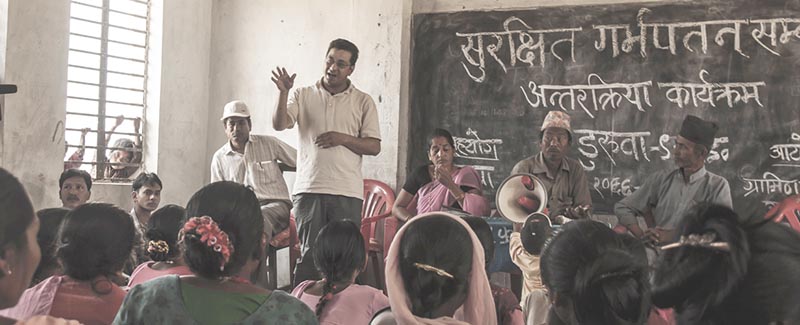Use of modern contraception methods witnesses no increase
Kathmandu, September 18
There has been no increase in the use of modern methods of contraception over the past 10 years across the country.
According to Nepal Demographic and Health Survey-2016, there was an increase in use of traditional methods of contraception from four per cent in 2006 to 10 per cent in 2016. However, no significant increase in the use of modern contraception methods was witnessed during the period.
Stagnant modern contraception use rate could be due to various factors, such as migration leading to spousal separation, and legalisation of abortion, according to the report.
The 2016 survey revealed that 42.8 per cent of women of reproductive age between 15-49 use modern contraception methods of family planning. The number of women using modern contraception methods of family planning was 43.2 per cent in 2011.
Traditional methods such as rhythm method, withdrawal and other methods have been used by women and men. Modern contraception methods include male and female sterilisation, injectables, intrauterine devices (IUDs), contraceptive pills, implants, condoms, lactational amenorrhea and emergency contraception.
In recent times, some 53 per cent of married women use methods of family planning. Female sterilisation is the most commonly used method (15 per cent), followed by injectables (9 per cent), male sterilization (6 per cent), and the pill (5 per cent), the 2016 report revealed.
According to the report, 24 per cent of married women of reproductive age had an unmet need for family planning that is, they wanted to limit births, but were not using any methods of contraception.
Although 86 per cent of currently married women and 82 per cent of currently married men have heard about IUDs, only one per cent of currently married women used them.
“There are challenges such as high adolescent fertility, high unmet need for family planning, and unintended pregnancies in the country. There are disparities in access and utilisation of family planning services. There is also a delay in procurement of family planning commodities. Family planning commodities and equipment are inadequate and also there is a gap between knowledge and service utilisation,” said Bhim Singh Tinkari, director of Family Health Division.
Facts from the reports were revealed during the sixth National Family Planning Programme held in the capital today, with an aim to raise awareness about family planning.
“Objective of National Family Planning Programme is to improve health status of people through accountable and equitable health service delivery system, through informed choice to access and use voluntary family planning services, through increased and equitable access to quality family planning information and services,” said Tinkari, adding, “Family planning not only improves women’s chances of surviving pregnancy and childbirth, but also contributes to gender equality, better child health, and improved education outcomes, including poverty reduction.”






